Gigabyte Aero 16 XE5 (2022) review: AMOLED-powered good looks, but underwhelming elsewhere
The Aero looks excellent and has a stunning display, but it suffers in too many other areas
-
+
Fantastic AMOLED screen
-
+
Sturdy, stylish aluminium chassis
-
+
Great keyboard
-
+
Fast processor
-
-
Mediocre battery life
-
-
Poor connectivity

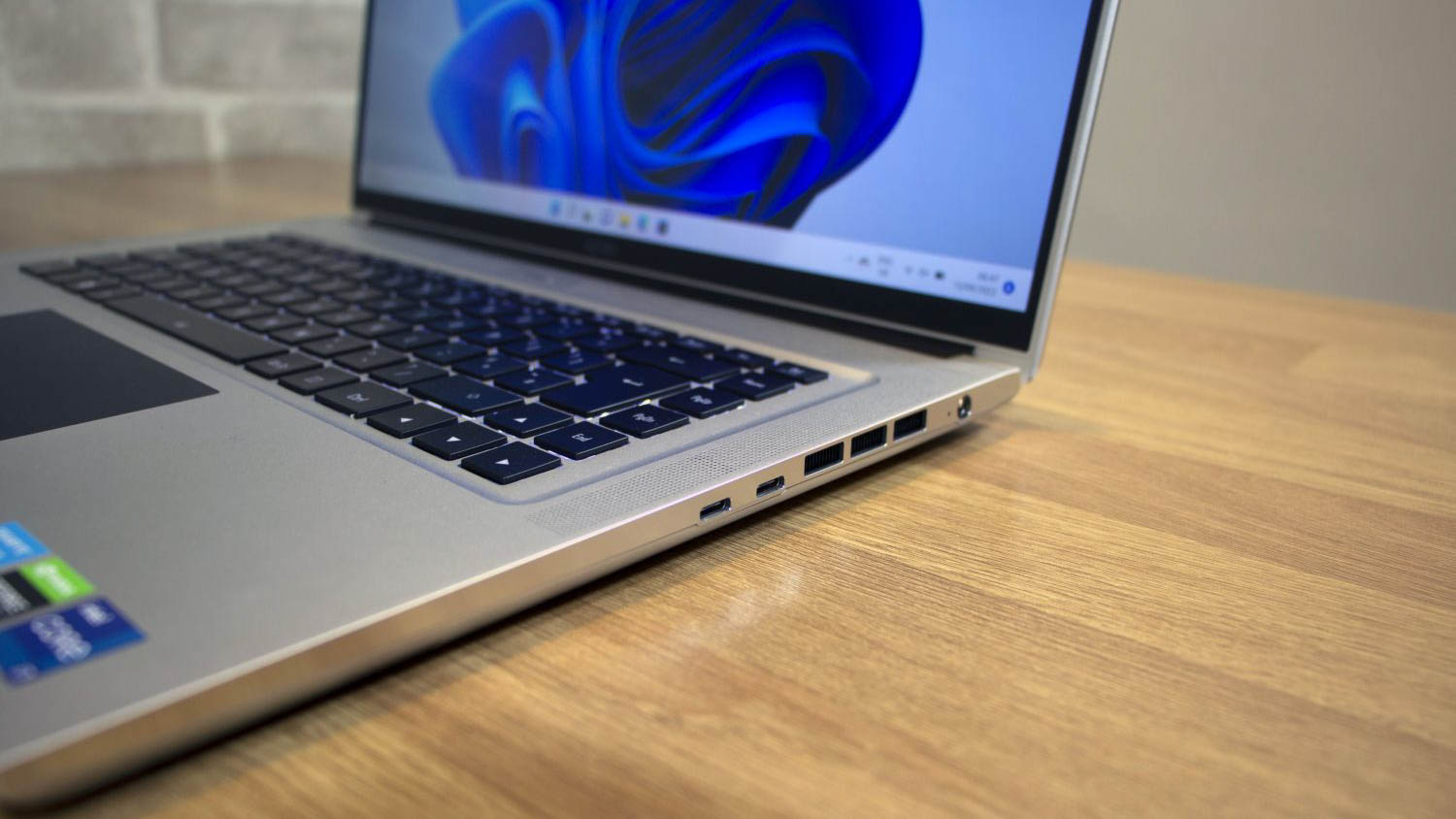
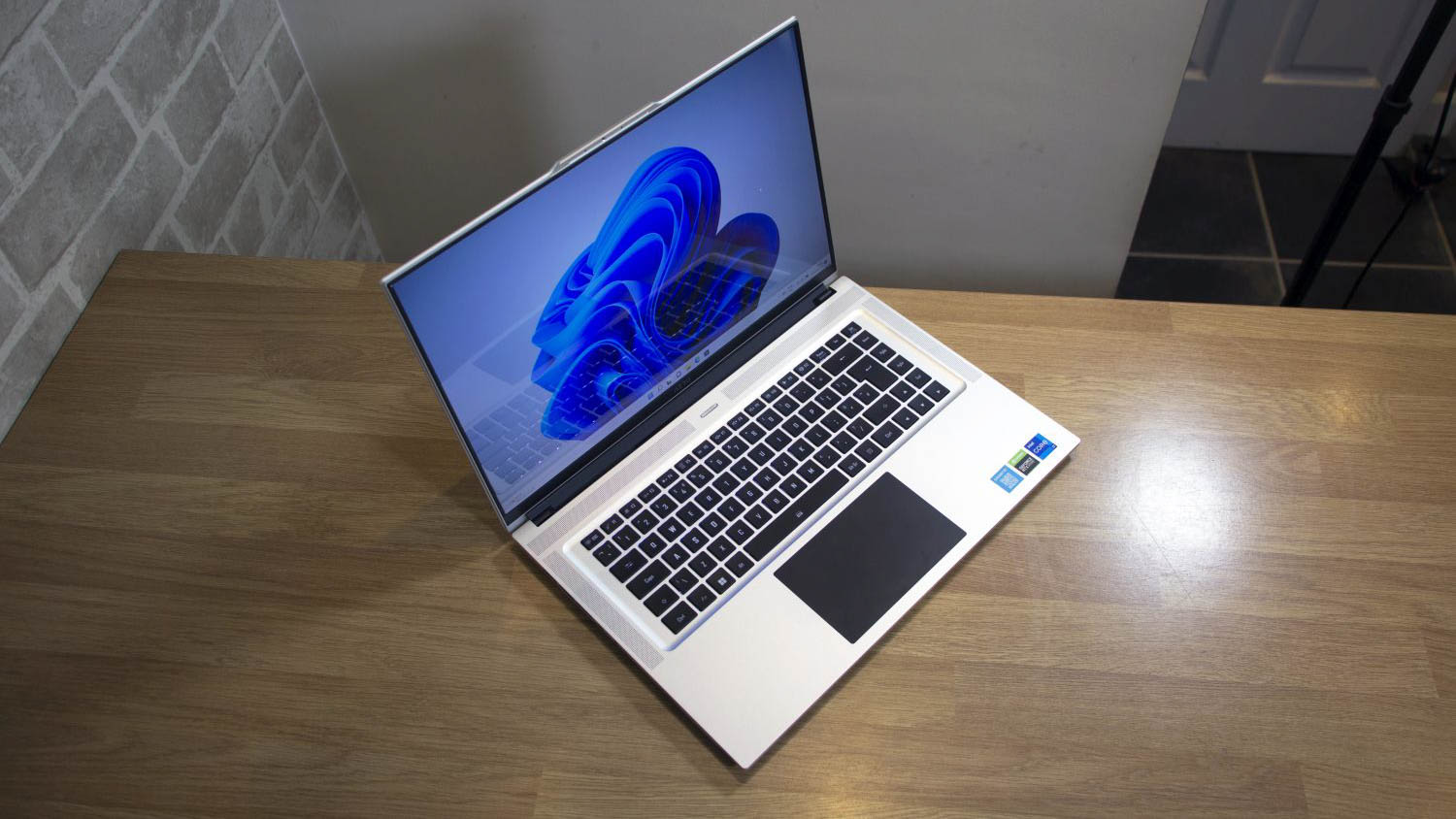
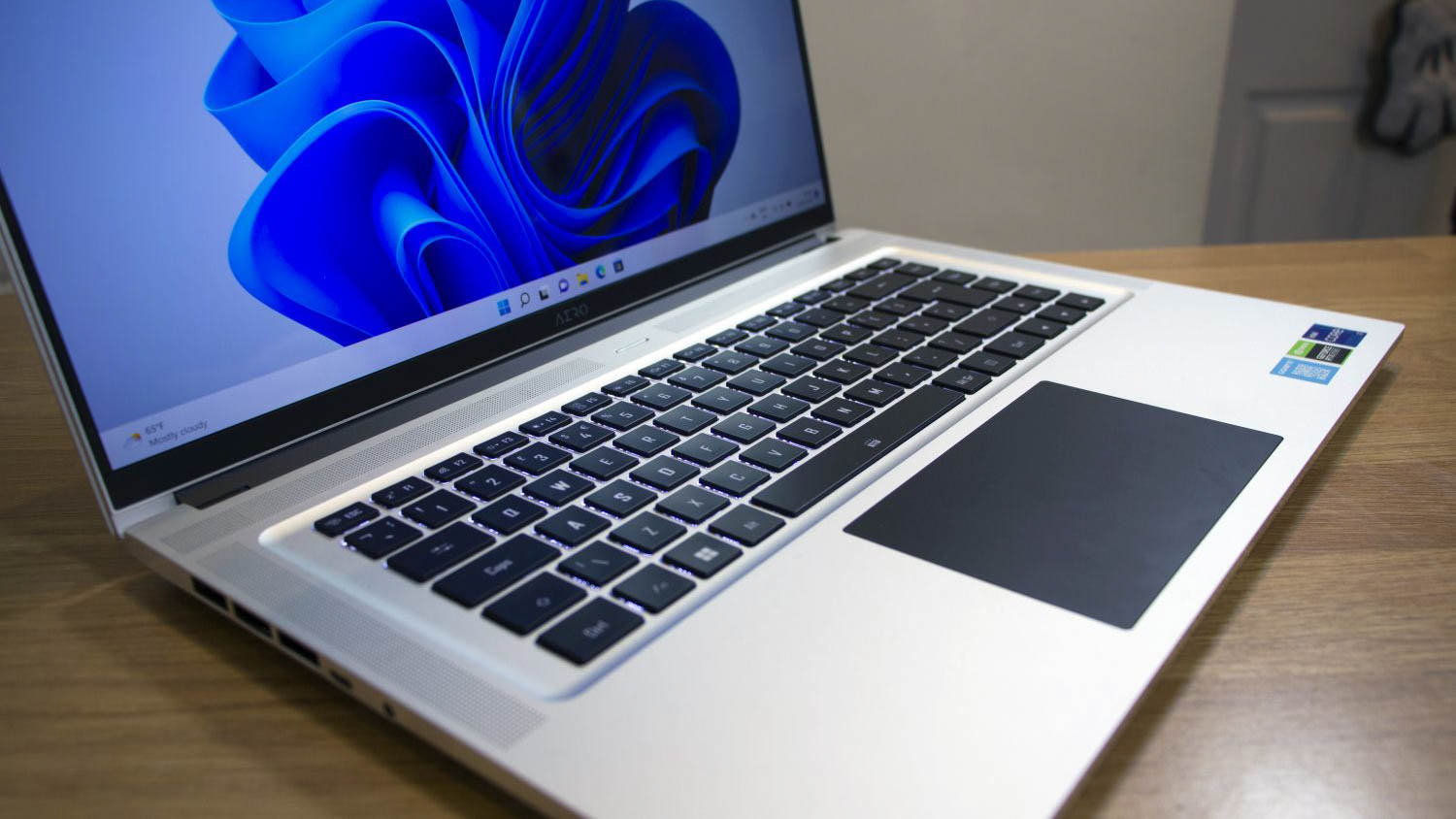
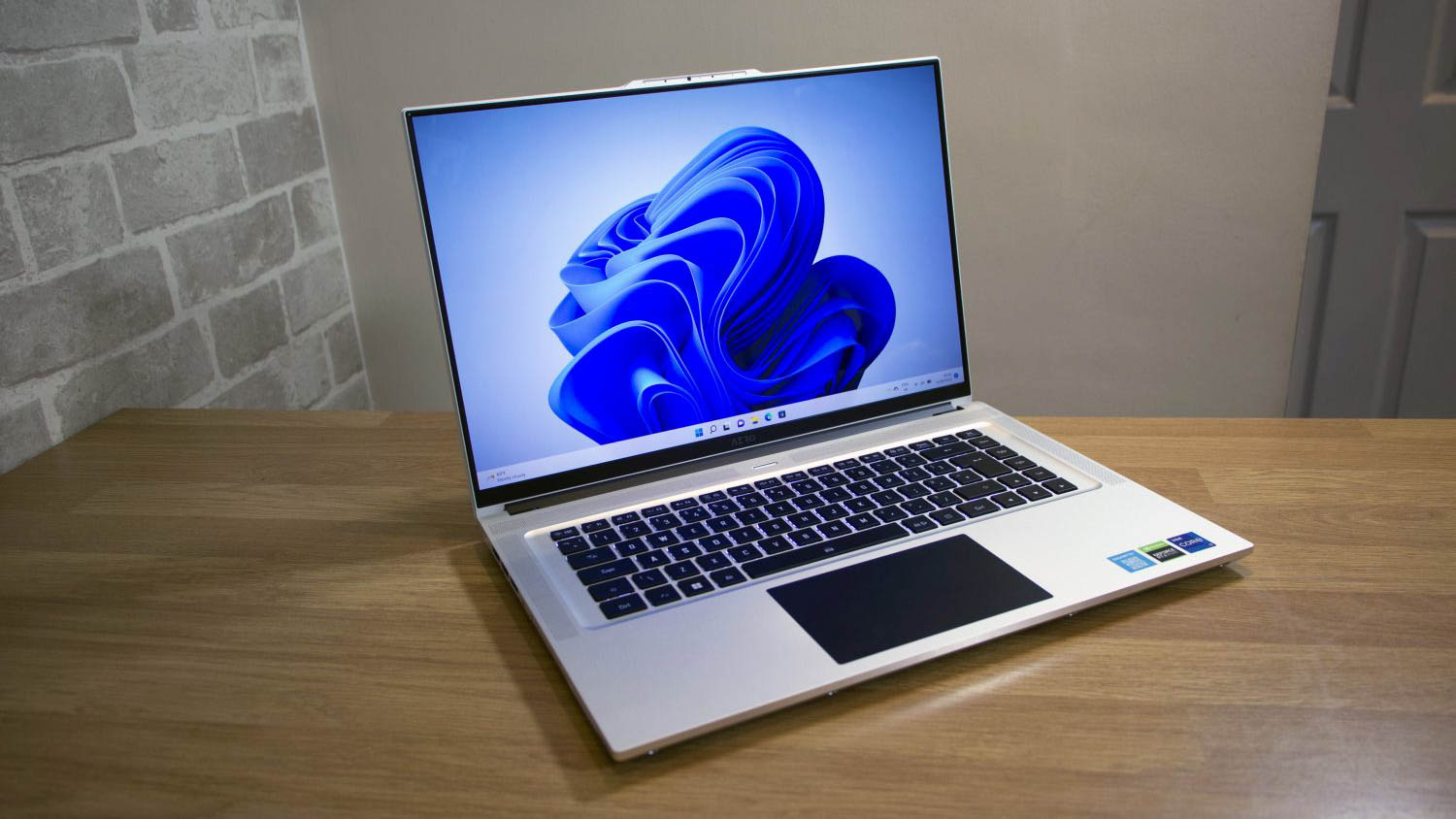
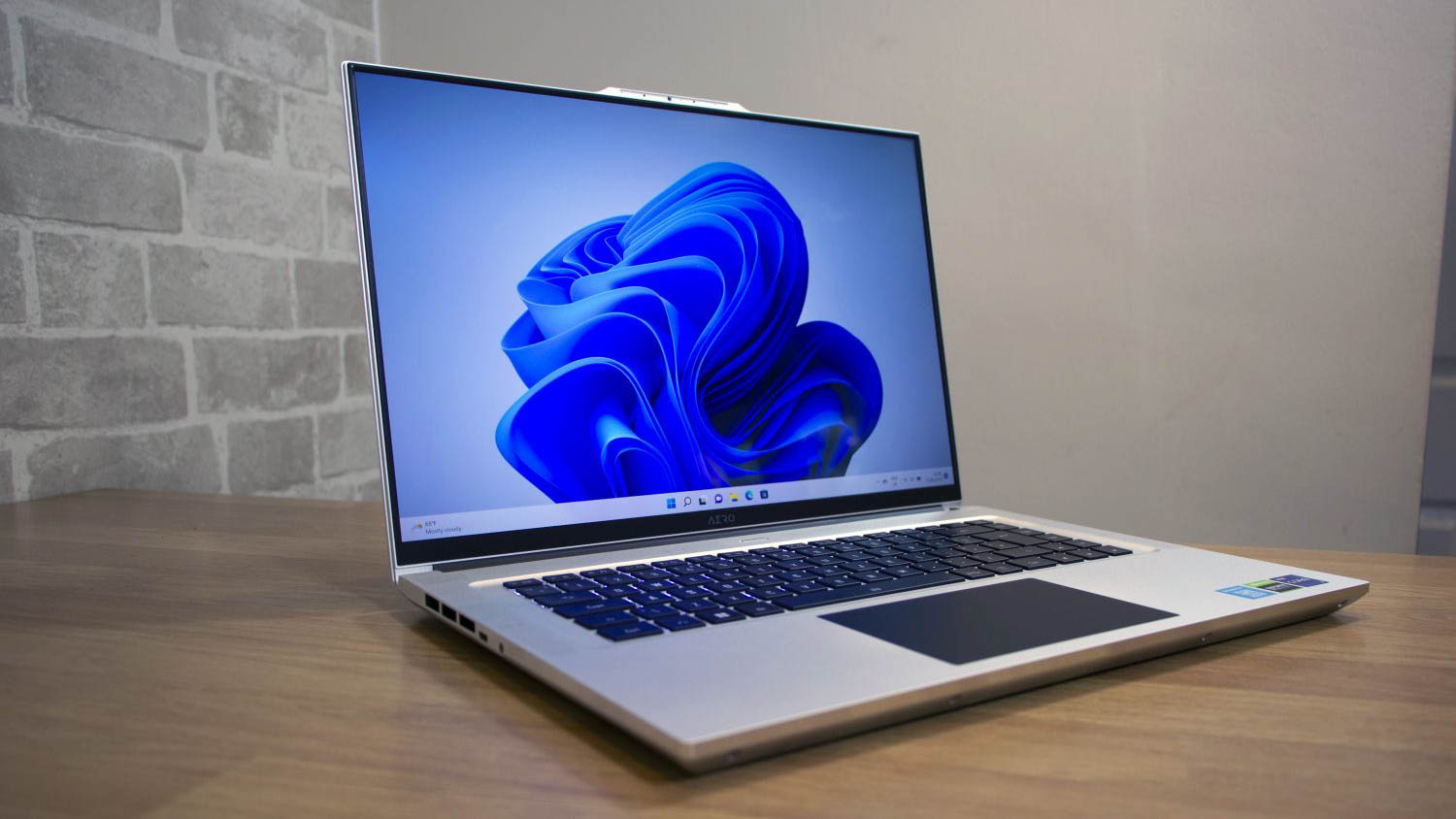
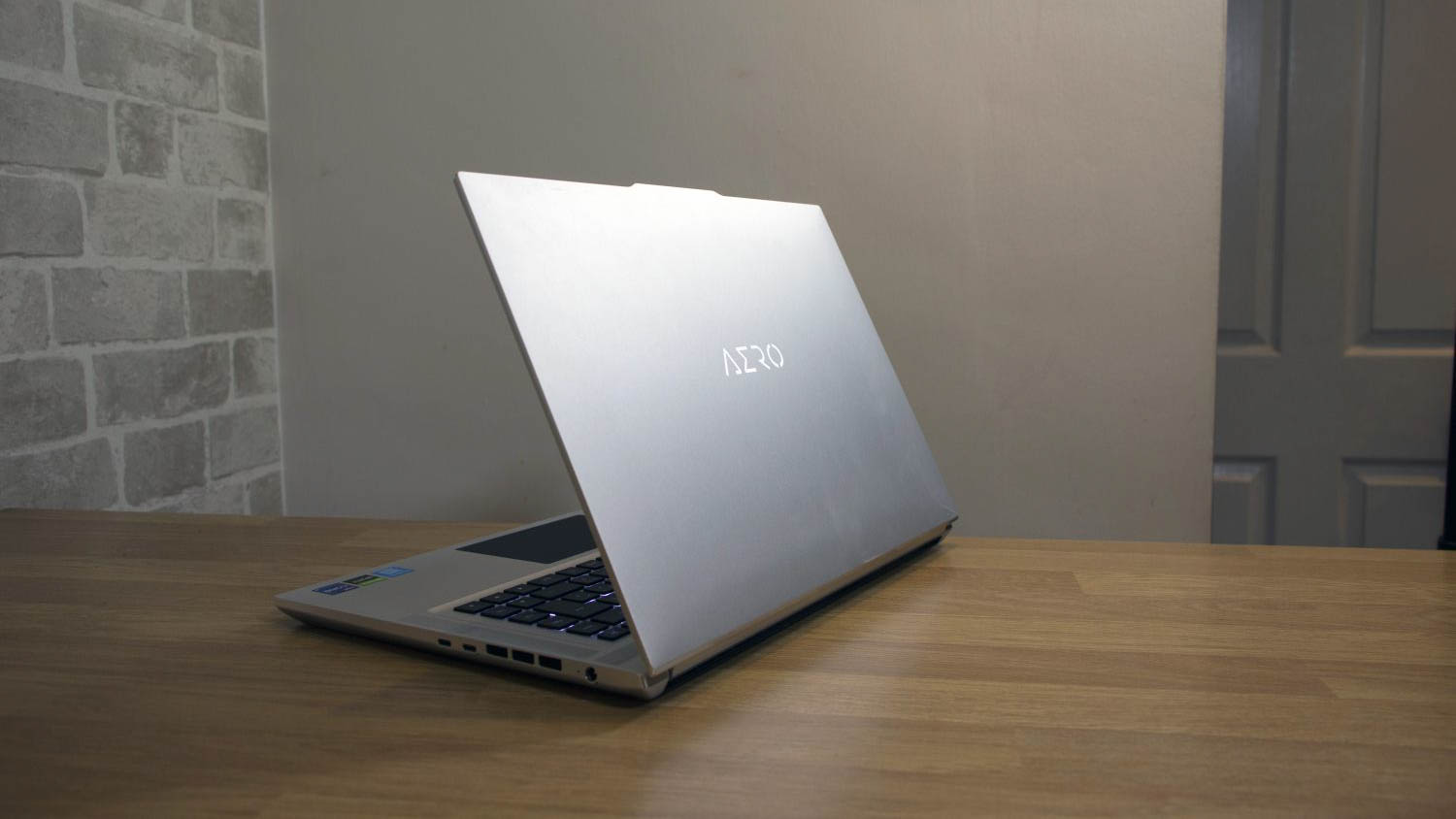
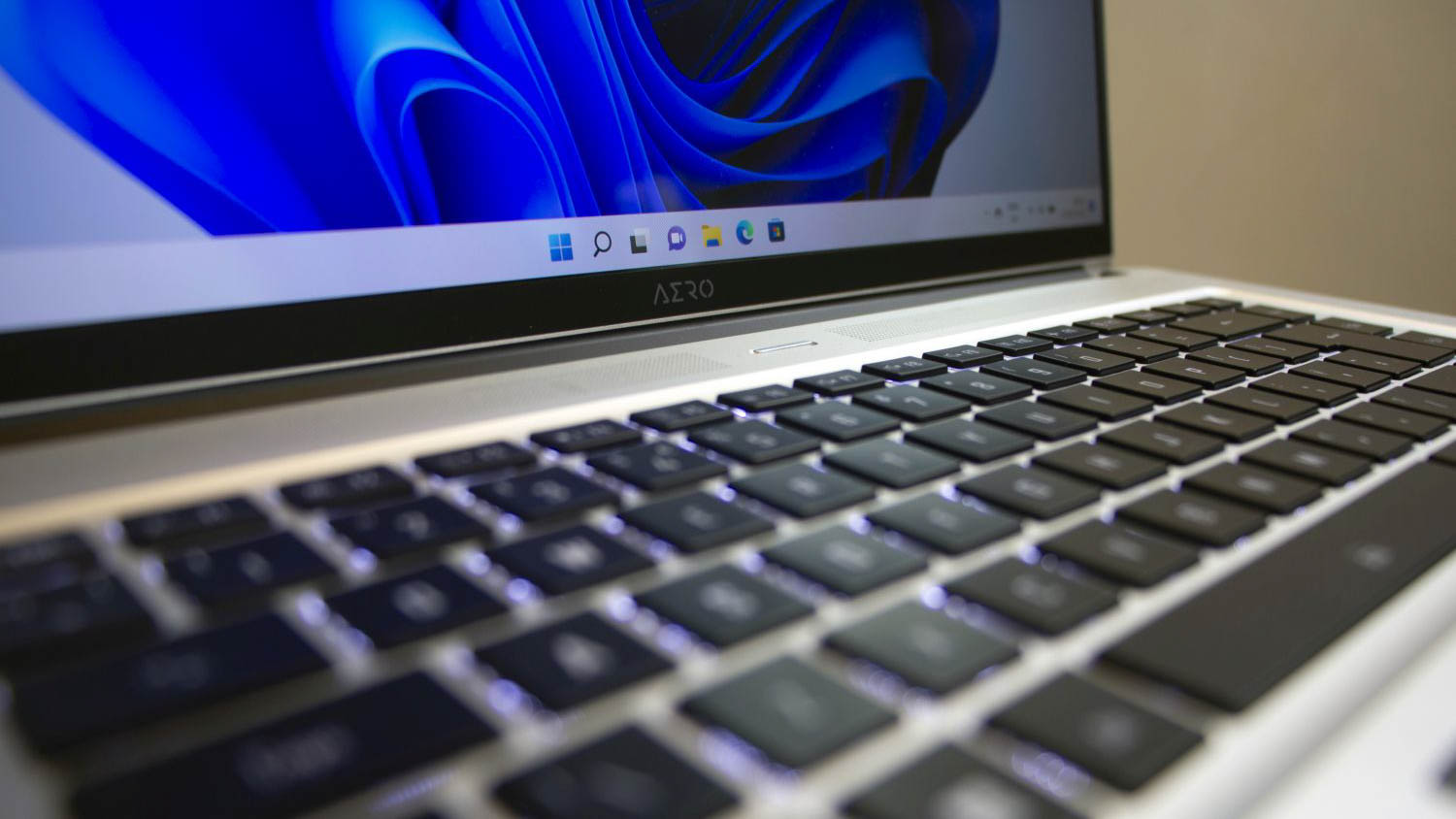
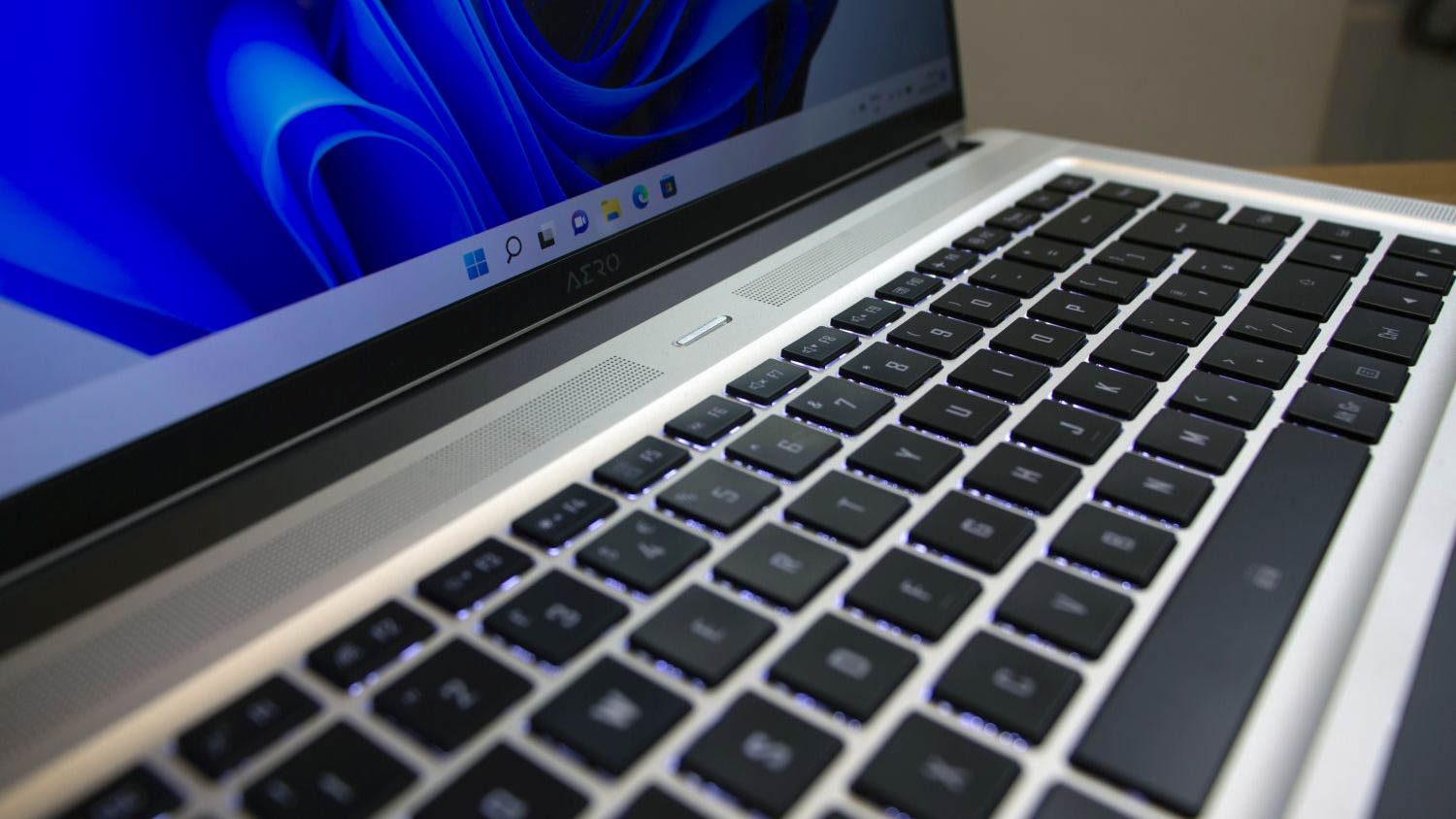
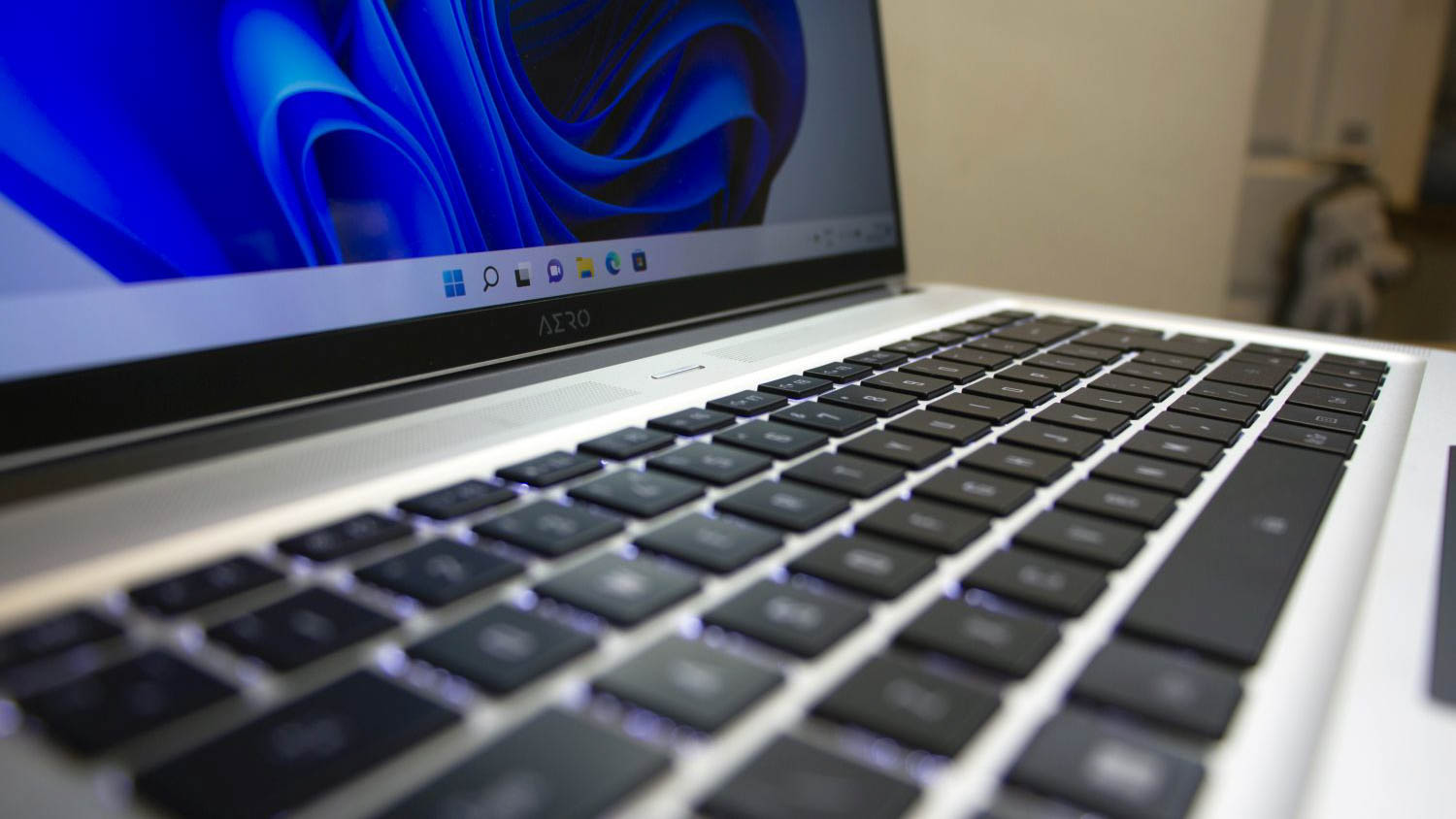
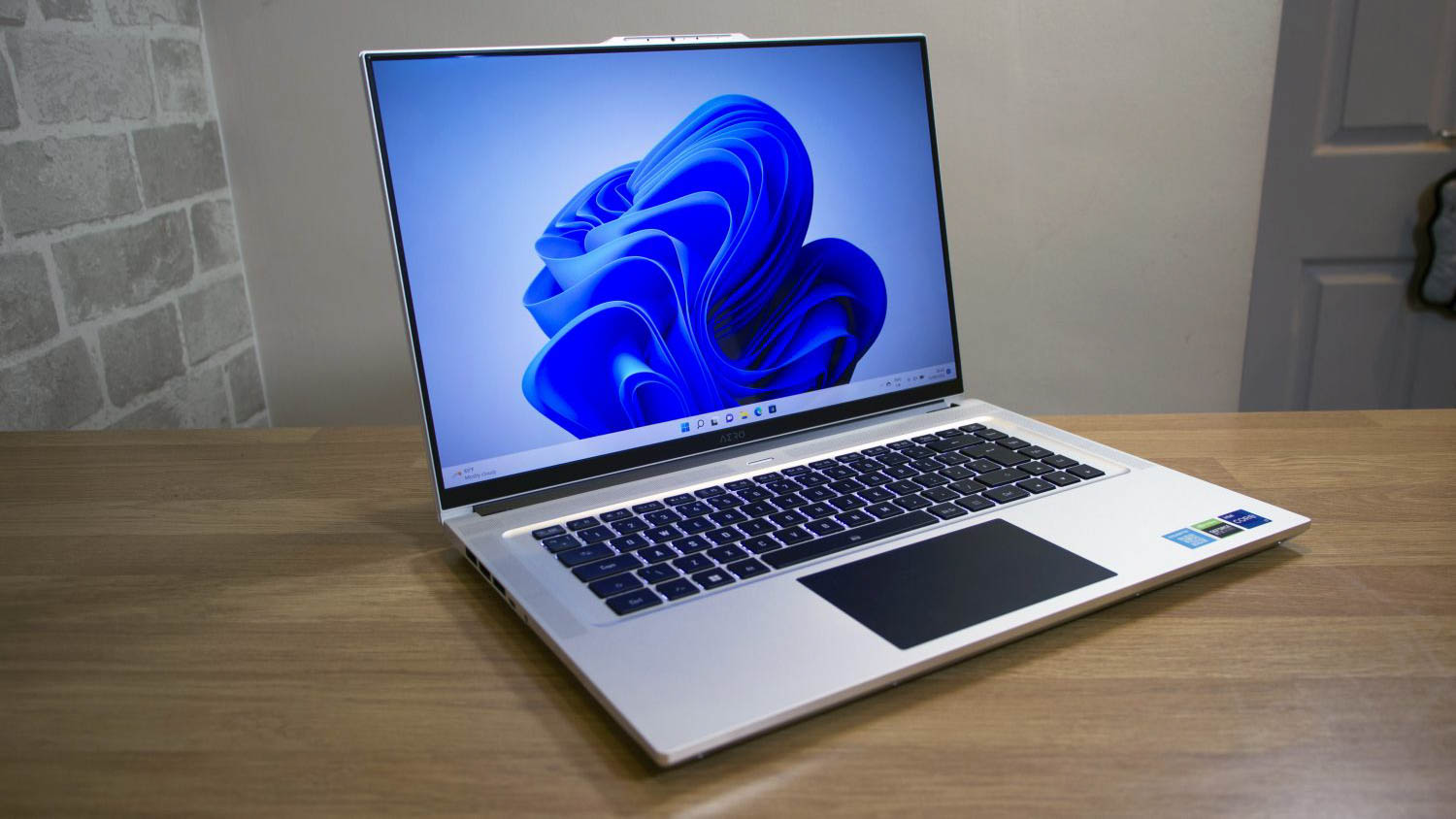
There's no shortage of high-end laptops that aim to deliver huge professional power inside a sleek enclosure, so the Gigabyte Aero 16 will have to work hard to impress. Internally, creatives benefit from one of Intel's newest Core i7 processors and powerful Nvidia graphics. On the outside, there's a 4K AMOLED display and aluminium-alloy chassis.
There's no doubt that Gigabyte's machine ticks the right boxes, but it needs to excel if it wants to outpace rivals like the Apple MacBook Pro 16 and Asus ProArt StudioBook Pro 16 OLED. It'll have to be a top-notch machine to justify its vast £1,999 exc VAT price, too.
Gigabyte Aero 16 XE5 review: Design
It certainly looks and feels like a premium portable. The CNC-milled aluminium alloy is strong and looks great; the metal shines, the milled speaker grilles are smart, and the screen bezels are slim. The design has pleasing practical touches, too. The webcam sits on a sizeable lip that makes it easy to open the lid, and the power button sits away from the keyboard. It's not bulky, either: the Aero weighs 2.3kg and it's only 22.4mm thick.
It's a good start, although the Gigabyte's rivals are better in some regards. The Asus and MacBook Pro are both slimmer, and the Apple machine weighs less – and arguably looks even slicker.
Gigabyte Aero 16 XE5 review: Keyboard and trackpad
There's plenty of competition in the keyboard department, too, and the Gigabyte easily holds its own. The sunken keyboard delivers plenty of travel, and the buttons hammer down into a sturdy base. Those attributes create a typing action that's fast, robust and satisfying – and not particularly loud.

There's more feedback than on the shallow Asus, and there's a little more travel than the excellent typing hardware on the MacBook. The only issue is the layout as you don't get a number pad.
The trackpad is similarly excellent, with a slick and responsive surface and two shallow, fast buttons. It's an ideal option for working quickly, and its central position means you're less likely to brush the pad with your left hand. The Asus goes further with three physical buttons and its bespoke Dial, which can alter settings in compatible Adobe apps.
Gigabyte Aero 16 XE5 review: Display
Those creative apps will look bold on this panel thanks to its Pantone-validated AMOLED display. It's the same tech as the Asus, and it's a step ahead of the IPS hardware in the MacBook. The spec is impressive, too; the 16:10 aspect ratio delivers extra height and the 3,840 x 2,400 resolution means it's incredibly sharp.
Quality is exceptional, too. Alongside incredible contrast and vibrancy, you get a Delta E of 1.87 and a colour temperature of 6,591K. They're top-notch figures that ensure ample accuracy for creative work. The panel renders 100% of the sRGB gamut, 95.8% of the Adobe RGB space and 98.6% of the DCI-P3 spectrum with volume figures that soar beyond 100%, so you can tackle any creative workload here. The peak brightness level of 397cd/m2 is fine for office and outdoor use.
There's hardly anything wrong with this panel – it's the match of the Asus and it's better than Apple's screen, which has a lower resolution and narrower gamut ability. We would note the 60Hz refresh rate: while that's enough for everyday work, gamers may want to look elsewhere. That rate is acceptable for mainstream titles, but it's not particularly good if you want smooth motion in fast-paced shooters and esports games.

Gigabyte Aero 16 XE5 review: Hardware and performance
The high-end display sits above powerful internals. Intel's Core i7-12700H pairs six multi-threaded performance cores with eight capable efficiency cores. It's a beast, and Nvidia's GeForce RTX 3070 Ti is similarly muscular, with 8GB of dedicated memory and 5,888 CUDA cores. Storage comes from a pair of 1TB Gigabyte SSDs which deliver sensational read and write speeds of 7,085MB/sec and 5,005MB/sec, so you'll have fast boots, loads and saves.
Our only component quibble comes from the DDR5 memory. The included 16GB of dual-channel 4800MHz DDR5 is ideal for mainstream workloads, but 32GB is better for demanding creative tasks and it's what we'd expect at this price. Users can reach the memory slots, but twelve Torx screws secure the base and it's not easy to get inside.
Intel's processor propelled the Aero to an overall score of 323 in our application benchmarks, which is a mighty result –nearly 100 points beyond the Asus and its AMD hardware. In SPECviewperf 2020's 3dsmax-07 run the Gigabyte's score of 92.83 easily outpaced the Asus, and its scores of 287.22 and 197.65in maya-06 and solidworks-05 are similarly superb. These scores all bode well for effective performance in animation, design and CAD software.
The Aero will easily handle photo-editing, mainstream video work and other content creation applications. The GPU's Time Spy score of 8,617 is modest for an RTX 3070 Ti, but it's still good enough for graphical workloads and after-hours gaming.
Gigabyte's rig is consistently exceptional in thermal tests, too. It hardly makes any noise even in tough benchmarks, and the external panels are warm rather than hot – a rarity on a laptop like this. That effective thermal performance has a negative, though, because this laptop could be even faster. Its Geekbench result of 11,265 is solid, but this chip can soar beyond 12,000 points in that test. In Cinebench R23, the Gigabyte's result of 11,112 is a long way behind its potential top speed of 16,000 points. The CPU only ran at 2.4GHz during a multi-core benchmark, which is great for reducing heat and noise but not for performance. Look to the Alienware x17 R2 for a demonstration of what the Core i7-12700H can do without serious throttling.

The Gigabyte's alternative performance modes didn't help much, either: the chip still didn't achieve maximum speeds but did produce loads of extra fan noise. This means that the Aero is not the fastest option available. The Apple M1 Pro CPU in the cheapest MacBook models matches the Aero for pace at the same price as the Aero, and the M1 Max chip is faster than Intel's silicon – albeit with a £2,749 VAT cost. Expect forthcoming M2 processors to be even faster.
The Aero didn't impress in battery tests, either. In our video playback test with the screen at 170cd/m2 and flight mode enabled the Gigabyte lasted for 5hrs 37mins. That's enough power to last until lunchtime, but it's behind the Asus and the MacBook will last twice as long.
Gigabyte Aero 16 XE5 review: Ports and features
Gigabyte's laptop looks sleek, but its connectivity is found wanting. The Aero has two Thunderbolt 4 ports and a sole USB 3.2 Gen 2 Type-C connector, but it's meagre beyond that. There's an audio jack, but no card reader or HDMI output – and no full-size USB ports. Gigabyte does include a hub that adds full-size USB, HDMI, Gigabit Ethernet and mini-DisplayPort connectivity, but it awkwardly slots into the side of the laptop and it's not elegant.
On the inside you'll find dual-band Wi-Fi 6E alongside Bluetooth 5.2. The webcam supports Windows Hello, but its 720p picture is dull and underwhelming when compared to 1080p units. You get TPM support, but there's no fingerprint reader and no Kensington lock slot. Don't expect much audio quality, either. The speakers have plenty of volume, but their output is tinny and flat – there's no bass or depth, and they're barely serviceable for background music.
The MacBook Pro has three Thunderbolt 4 ports and the Asus has pairs of Thunderbolt and full-size USB ports. Both of those laptops have SD card readers and HDMI outputs, and the Asus includes onboard Ethernet.
Gigabyte Aero 16 XE5 review: Verdict
The Gigabyte impresses initially thanks to its stunning AMOLED display, crisp keyboard and sleek aluminium chassis, but closer examination reveals several areas where it doesn't quite hit the mark. The processor and graphics core are quick – but faster elsewhere. It alao falls behind rivals when it comes to battery life and connectivity, and there's nothing to choose between the Gigabyte and the competition at the checkout: the Aero, the Asus and the entry-level MacBook Pro all cost £1,999 exc VAT.
The Aero supplies sensational screen quality and a superb chassis, but you'll find more speed, connectivity and battery life elsewhere – so we'd consider other machines just as much before laying down any cash for the Gigabyte.
Gigabyte Aero 16 XE5 Specifications
| Processor | 2.3GHz six-core Intel Core i7-12700H |
| RAM | 16GB DDR5 |
| Storage | 2 x 1TB SSD |
| Display | 16in 3,840 x 2,400 AMOLED |
| Graphics | Nvidia GeForce RTX 3070 Ti 8GB |
| Connectivity | Dual-band 802.11ax WiFi, Bluetooth 5.2, Gigabit Ethernet |
| Ports | 2 x Thunderbolt 4, 1 x USB 3.2 Gen 2 Type-C, 1 x audio |
| Dimensions | 356 x 249 x 22.4mm (WxDxH) |
| Weight | 2.3kg |
| Operating system | Windows 11 Home 64-bit |
Get the ITPro daily newsletter
Sign up today and you will receive a free copy of our Future Focus 2025 report - the leading guidance on AI, cybersecurity and other IT challenges as per 700+ senior executives
Mike Jennings has worked as a technology journalist for more than a decade and has been fascinated by computers since childhood, when he spent far too long building terrible websites. He loves desktop PCs, components, laptops and anything to do with the latest hardware.
Mike worked as a staff writer at PC Pro magazine in London for seven years, and during that time wrote for a variety of other tech titles, including Custom PC, Micro Mart and Computer Shopper. Since 2013, he’s been a freelance tech writer, and writes regularly for titles like Wired, TechRadar, Stuff, TechSpot, IT Pro, TrustedReviews and TechAdvisor. He still loves tech and covers everything from the latest business hardware and software to high-end gaming gear, and you’ll find him on plenty of sites writing reviews, features and guides on a vast range of topics.
You can email Mike at mike@mike-jennings.net, or find him on Twitter at @mikejjennings
-
 ‘Phishing kits are a force multiplier': Cheap cyber crime kits can be bought on the dark web for less than $25 – and experts warn it’s lowering the barrier of entry for amateur hackers
‘Phishing kits are a force multiplier': Cheap cyber crime kits can be bought on the dark web for less than $25 – and experts warn it’s lowering the barrier of entry for amateur hackersNews Research from NordVPN shows phishing kits are now widely available on the dark web and via messaging apps like Telegram, and are often selling for less than $25.
By Emma Woollacott Published
-
 Redis unveils new tools for developers working on AI applications
Redis unveils new tools for developers working on AI applicationsNews Redis has announced new tools aimed at making it easier for AI developers to build applications and optimize large language model (LLM) outputs.
By Ross Kelly Published
-
 Google layoffs continue with "hundreds" cut from Chrome, Android, and Pixel teams
Google layoffs continue with "hundreds" cut from Chrome, Android, and Pixel teamsNews The tech giant's efficiency drive enters a third year with devices teams the latest target
By Bobby Hellard Published